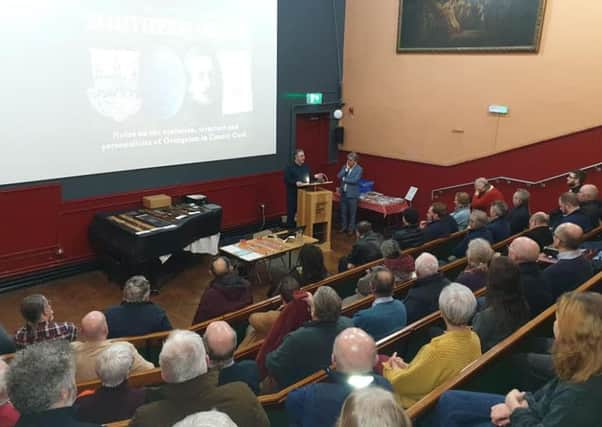Lodge Life: Lecture on little-known Orange legacy of Cork


Speaking at a unique event, hosted at the Crawford Art Gallery in Cork City, Orangeman and Armagh-based historian, Quincey Dougan, delivered his latest talk on the history of Orangeism in the Republic of Ireland.
Hosted by the Cork Historical and Archaeological Society, the audience was primarily composed of those from the city and suburbs, along with a representation from Bandon, Limerick and Dingle.
Advertisement
Hide AdAdvertisement
Hide AdWhilst once active in the south-west of Ireland, Orangeism declined in Cork during the Great War. The institution in its modern form was present in Bandon from 1797 and in Cork City by 1799. Its apparent peak came in the mid-late 1800s when it is said to have had 44 lodges.
A decline followed which reduced it to four lodges by 1891, and by the onset of the Third Home Rule crisis there was just one lodge in Cork City – Royal York LOL 983, and one in Bandon, Royal Williamite LOL 798.
The Great War and the conflicts that followed undoubtedly impacted the ability to meet and organise, and the last official Orange communications from Cork were made in 1919.
Quincey’s lecture focused on the origins of how the ‘Rebel county’ Orangemen proudly referred to it as ‘Southern Derry’, due to connections and affinity with the North West maiden city; then covered Orange structures and events in the county over the following century.
Advertisement
Hide AdAdvertisement
Hide AdAmong the elements that most garnered the attention of the audience was the remarkable story of a one-time leader of Cork Orangeism, Dominick Ronayne Patrick Sarsfield, a descendant of his part namesake and James II Lieutenant General. Other fascinating aspects included Co Cork’s two dedicated Orange halls; a look at some of the Provincial lodges including those in Bantry, Fermoy and Dunmanway; and the experiences of the last Cork County Grand Master, Arthur Ward.
Commenting on the significance of the lecture, Mr Dougan said: “This event has been a great example of how our history can be a positive tool in enabling understanding of differing modern perspectives and attitudes. Orangeism is an intrinsic part of not just Irish history; it is still an integral part of modern society for tens of thousands of people.”
Quincey intends to continue his research on Cork’s Orange traditions, and welcomes contact from anyone with items, photos, information or anecdotes relating to it. If you can help, e-mail [email protected].